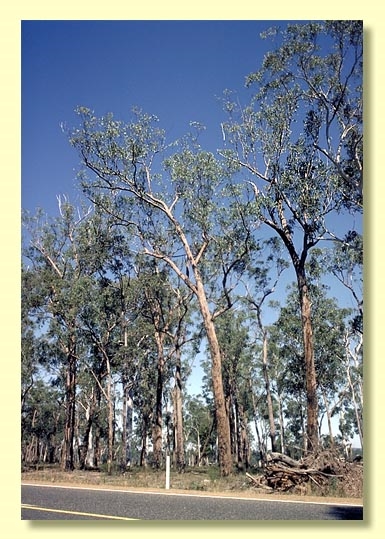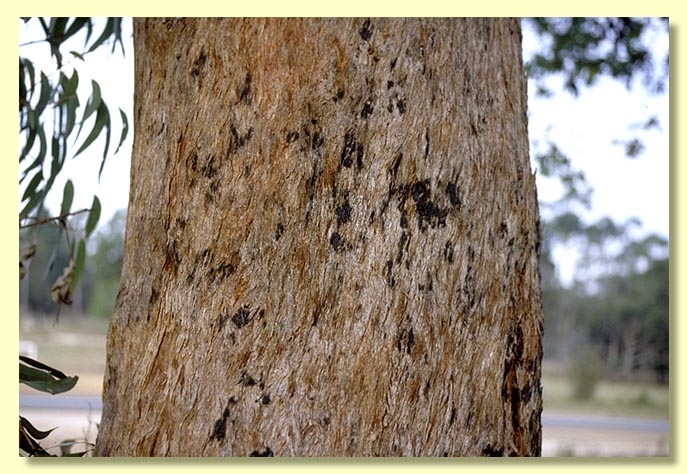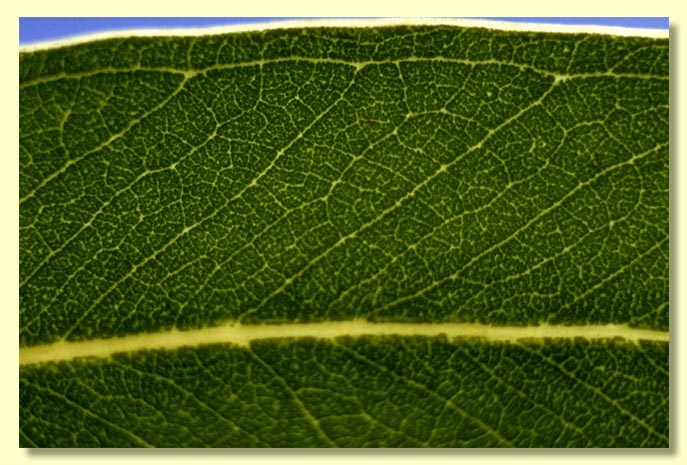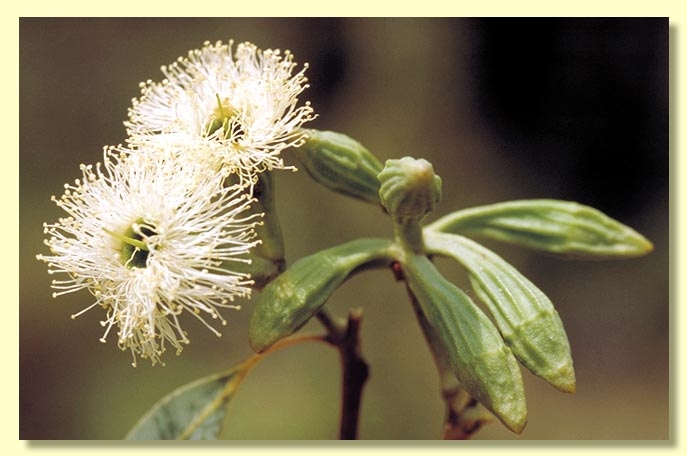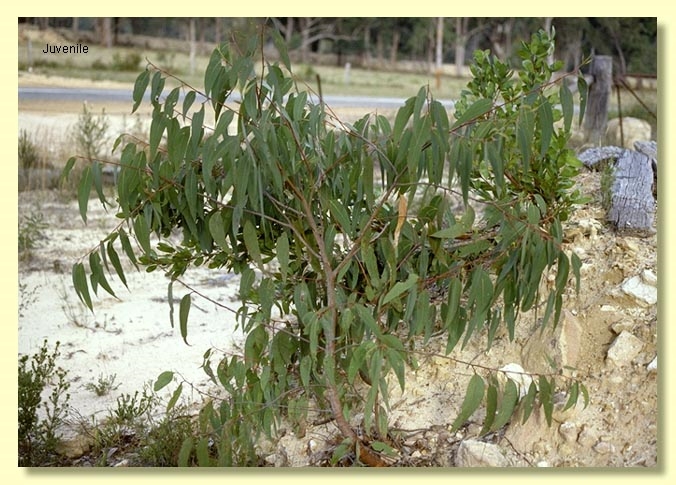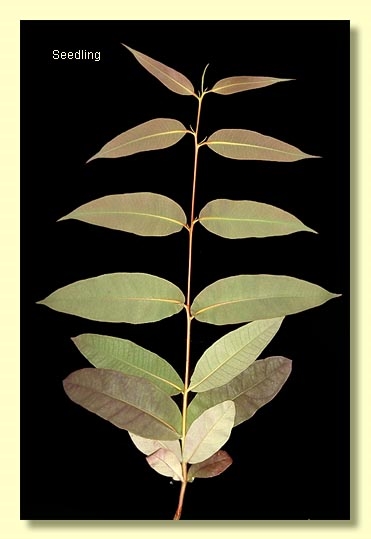Euclid - Online edition
Eucalyptus planchoniana
Eucalyptus | Eucalyptus | Insolita
T: Queensland, Eight Mile Plains, F.M. Bailey s.n., undated; lecto MEL 2 sheets [MEL705638 & MEL703450]; isolecto BRI [AQ024086, sheet 2 & sheet 3]; fide Bean, A.R., Telopea 12(3): 316-317 (2009).
Bark rough to small branches or the branches < 8 cm diameter smooth; rough bark stringy and shallowly fissured down trunk, usually red-brown, often prickly.
Juvenile growth (coppice or field seedlings to 50 cm): stem rounded in cross-section; juvenile leaves opposite and sessile for a few nodes then alternate, petiolate, elliptical to lanceolate or falcate, 7–20 cm long, 2.3–7 cm wide, base rounded or tapering to petiole, blue-green, pendulous, not scabrid.
Adult leaves alternate, petiole 1.5–3.2 cm long; blade lanceolate to falcate, 8–26 cm long, 1.5–3.5 cm wide, base oblique or tapering to petiole, concolorous, glossy, green to bluish green, side-veins at an acute or wider angle to midrib, moderately reticulate, or reticulation obscure, intramarginal vein parallel to and well removed from margin, oil glands island or obscure.
Inflorescence axillary unbranched, peduncle broadly flattened and erect or downturned, peduncles 2–3.2 cm long, buds 7 per umbel, pedicels 0.3–1.3 cm long. Mature buds ovoid to fusiform or diamond-shaped, 2–2.9 cm long, 0.8–1 cm wide, green, with many prominent longitudinal ribs, scar absent, operculum beaked to conical, stamens irregularly flexed, anthers reniform to cordate, versatile, dorsifixed, dehiscing by confluent slits or the slits sometimes separate, style long, stigma blunt or tapered, locules usually 4, the placentae each with 2 vertical ovule rows. Flowers white.
Fruit sessile or on pedicels to 0.9 cm long, cup-shaped to cylindrical or barrel-shaped, (1.5)1.7–2.8 cm long, (1.3)1.6–2.6 cm wide, prominently ribbed longitudinally (ca 10–12 ribs), disc descending, valves usually 4, enclosed.
Seeds dark brown, black or grey, 2.5–5 mm long, pyramidal or obliquely pyramidal, dorsal surface smooth or wrinkled, hilum terminal.
Cultivated seedlings (measured at ca node 10): cotyledons reniform; stems rounded in cross-section; leaves opposite for ca 5 nodes, then alternate, ovate to lanceolate, 10–14 cm long, 2.5–5.5 cm wide, base rounded to tapering, margin entire, apex pointed, dull, blue-green.
Flowering has been recorded in October, November and December.
Small to medium-sized forest tree of coastal hills from Camden Haven in northern coastal New South Wales north and inland to the Gibraltar Range and further to Moreton and Stradbroke islands east of Brisbane.
Eucalyptus planchoniana is not closely related to any other species and can be recognised by the red-brown rough bark, large, obliquely ovate, petiolate, pendulous, blue-green juvenile leaves (like blue-leaved ashes), large falcate, bluish green adult leaves, large, elongated, ribbed buds and the largest fruit of any species in coastal eastern Australia. The bark colour is similar to the distantly related E. microcorys, which is a better-formed tree with small buds and fruit and grows on more fertile soils.
Eucalyptus planchoniana is taxonomically isolated in Eucalyptus subgenus Eucalyptus section Insolita having reniform cotyledons, juvenile leaves alternate, bluish and glabrous, single axillary inflorescences with buds in sevens, buds with single operculum, irregularly flexed stamens, reniform anthers dehiscing by slits that may be confluent or separate, style long, ovules in two rows, seeds more or less pyramidal and buds and fruit ribbed longitudinally.

